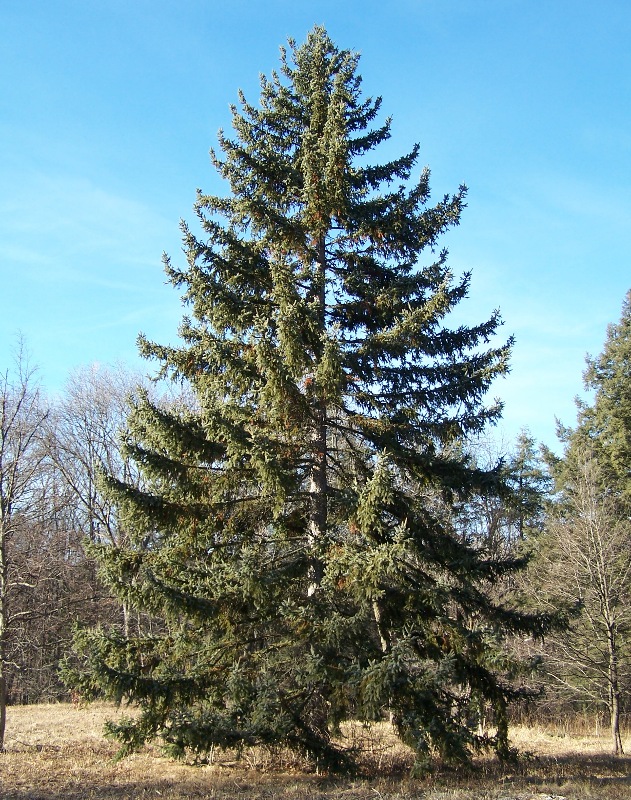- Picea koyamae
Taxobox
name = "Picea koyamae"
status = EN
status_system = iucn2.3
status_ref = IUCN2006|assessors=Conifer Specialist Group|year=1998|id=31290|title=Picea koyamae|downloaded=11 May 2006 Listed as Endangered (EN D v2.3)]

image_width = 240px
image_caption = Cultivated SpecimenMorton Arboretum accession 126-65-1
regnum =Plant ae
divisio =Pinophyta
classis = Pinopsida
ordo =Pinales
familia =Pinaceae
genus = "Picea"
species = "P. koyamae"
binomial = "Picea koyamae"
binomial_authority = Shiras."Picea koyamae" (Koyama's Spruce; Japanese: ヤツガタケトウヒ "yatsugatake-tohhi") is a rare
spruce , native toAkaishi Mountains andYatsugatake Mountains , or Nagano and Yamanashi Prefectures in centralHonshū ,Japan , where it grows at 1500-2000 m altitude.Farjon, A. (1990). "Pinaceae. Drawings and Descriptions of the Genera". Koeltz Scientific Books ISBN 3-87429-298-3.]It is a
monoecious evergreen tree growing to 25 m tall, with a trunk diameter of up to 1 m. The shoots are orange-brown, with scatteredpubescence . The leaves are needle-like, 8-16 mm long, rhombic in cross-section, dark bluish-green with conspicuousstoma tal lines. The cones are cylindric-conic, 4-9 cm long and 2 cm broad, maturing pale brown 5-7 months afterpollination , and have stiff, smoothly rounded scales 6–18 mm long and 6-12 mm wide. Pollination takes place in late spring. [Gymnosperm Database: [http://www.conifers.org/pi/pic/koyamai.htm "Picea koyamai"] ]The spruce is found growing in groups of 10-20, with a total population of only about 250 mature trees. The main cause of decline is the loss of natural regeneration after
typhoon s, with windblown trees being replaced by the planting of other faster-growing commercially valuable species.It is named after the Japanese
botanist Mitsua Koyama. The name was first published as "koyamai", but this is an orthographical error to be corrected under the provisions ofICBN Article 60.Farjon, A. (1998). "World Checklist and Bibliography of Conifers". Royal Botanic Gardens, Kew ISBN 1-900347-54-7.]It is occasionally planted as an
ornamental tree . The wood is similar to that of other spruces, but the species is too rare to be of economic value.References
Wikimedia Foundation. 2010.
